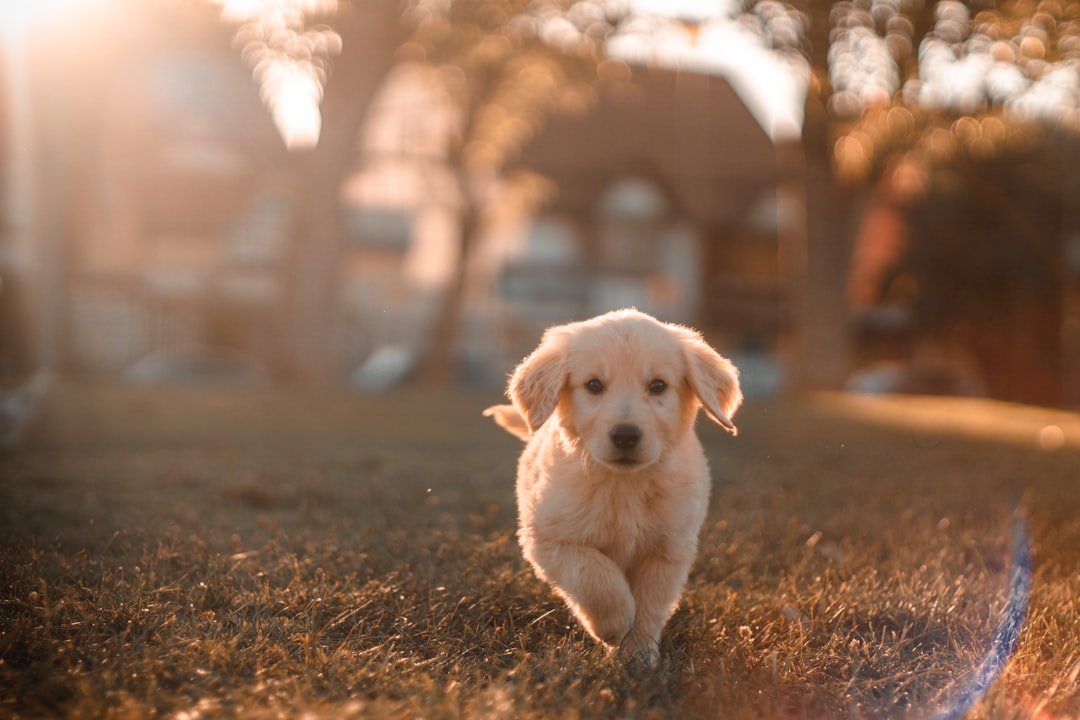The Golden Retriever: From Scottish Origins to Global Adoration
The article explores the origin and history of golden retrievers, the factors contributing to their global popularity, health and care considerations, the role of golden retriever clubs and rescue groups, and their versatile and endearing nature.
The Origin and History of Golden Retrievers
The history of golden retrievers dates back to 1868 when the breed was developed in Scotland through the intentional breeding of a yellow Wavy-Coated retriever with a Tweed Water spaniel. This deliberate mating was aimed at creating a versatile and efficient gun dog suitable for the challenging highland terrain. The result was a breed known for its friendly temperament, which perfectly suited the needs of hunters and outdoor enthusiasts.
Furthermore, the recent largest gathering of golden retrievers in the Scottish Highlands was a significant event that not only celebrated the breed’s birthplace but also served as a testament to its global recognition and popularity. With dogs and owners from various corners of the world coming together to pay homage to the breed’s origins, the event underscored the breed’s enduring appeal and historical significance. This gathering not only showcased the breed’s widespread reach but also highlighted the deep-rooted connection that enthusiasts and owners have with the golden retriever, stemming from its rich history and heritage.
In addition, Guisachan House, the ancestral home of the golden retriever, played a pivotal role in the breed’s development and recognition. The estate served as the breeding grounds where Lord Tweedmouth selectively bred golden retrievers, laying the foundation for the breed’s distinct traits and characteristics. The historical and cultural significance of Guisachan House in shaping the golden retriever’s lineage cannot be understated, as it remains a symbol of the breed’s heritage and the dedication of its early breeders to create an exceptional working and companion dog.
Lord Tweedmouth and the Development of Golden Retrievers
Lord Tweedmouth’s contributions to the development of golden retrievers extended beyond just selective breeding. His dedication to creating an ideal gun dog for the highland terrain was rooted in a deep understanding of the breed’s historical and cultural context. By carefully pairing the yellow Wavy-Coated retriever with the Tweed Water spaniel at his estate, Guisachan, Lord Tweedmouth aimed to cultivate a dog that not only excelled at retrieving game but also embodied traits of friendliness, reliability, and self-confidence.
One remarkable example of Lord Tweedmouth’s breeding efforts is the establishment of the breed standard, which delineated the physical and behavioral characteristics that distinguish golden retrievers. This standardization played a pivotal role in solidifying the breed’s identity and ensuring its recognition as a distinct and desirable dog breed. Furthermore, Lord Tweedmouth’s meticulous record-keeping of the breeding process and the traits exhibited by the dogs enabled future breeders to adhere to a set of guidelines that preserved the golden retriever’s unique attributes.
Lord Tweedmouth’s foresight and commitment to developing the golden retriever as a multi-faceted and versatile dog have left an indelible mark on the breed’s history. His efforts not only shaped the breed’s early years but also set the stage for its enduring appeal and widespread recognition as a beloved family pet, a dedicated working dog, and a cherished companion.
Factors Contributing to the Global Popularity of Golden Retrievers
The widespread popularity of golden retrievers can be attributed to several factors that have contributed to their global recognition and appeal. Firstly, their specific traits and characteristics, such as friendliness, reliability, and self-confidence, have played a pivotal role in endearing them to dog enthusiasts around the world. For example, their friendly and reliable nature makes them excellent companions for families, individuals, and even other pets, while their self-confidence allows them to excel in various roles and activities.
Additionally, the remarkable versatility of golden retrievers has significantly enhanced their global recognition. For instance, these dogs are not only proficient in hunting and retrieving, but they also shine in dog sports, conformation shows, and therapy work. Their exceptional adaptability and proficiency in multiple roles have made them highly sought after in different contexts, contributing to their widespread popularity.
Furthermore, the breed’s rank as the third most popular dog breed in the United States is a testament to their widespread appeal and recognition. This popularity underscores the fact that golden retrievers have captured the hearts of countless individuals and families, solidifying their status as one of the most beloved dog breeds globally. Their ability to seamlessly blend into various lifestyles and fulfill diverse needs has undoubtedly contributed to their enduring popularity and recognition on a global scale.
Health and Care Considerations
Golden retrievers are known for their friendly and reliable nature, but they are also prone to certain health issues that require special attention from their owners. For instance, hip dysplasia, a common concern in the breed, can lead to discomfort and mobility issues for the dog. This condition underscores the importance of proactive healthcare and regular veterinary check-ups to address potential health issues early on and provide appropriate treatment. By staying proactive, owners can ensure the well-being and quality of life for their beloved golden retrievers.
In addition to healthcare, the physical and mental well-being of golden retrievers also depends on regular grooming, exercise, and mental stimulation. The breed’s moderate to high energy level necessitates at least 2 hours of exercise per day, along with engaging activities to keep their minds sharp and active. Regular grooming, including brushing, bathing, and ear and nail care, is essential to maintain the breed’s dense, water-repellent coat and overall hygiene. These care considerations are crucial for preserving the health and happiness of golden retrievers, ensuring they lead fulfilling and comfortable lives as beloved family members.
Role of Golden Retriever Clubs and Rescue Groups
Golden retriever clubs and rescue groups are essential in preserving the breed’s heritage and promoting responsible ownership. They contribute significantly to finding suitable homes for dogs in need, maintaining breed standards, and promoting ethical breeding practices. For instance, the recent gathering of golden retrievers in the Scottish Highlands, organized by the Golden Retriever Club of Scotland, not only celebrated the breed’s birthplace but also highlighted the pivotal role of these organizations in preserving the history and tradition of proper golden breeding.
Moreover, these clubs and rescue groups also play a crucial role in educating the public about the specific needs of golden retrievers, including their exercise requirements, grooming needs, and potential health issues. By disseminating valuable information, they ensure that prospective owners are well-informed and equipped to provide the best care for these beloved dogs. Additionally, they actively engage in rescue and rehoming efforts, providing a safety net for golden retrievers in distress and ensuring that they find loving and suitable forever homes.
In summary, the dedication of golden retriever clubs and rescue groups to responsible breeding, education, and rehoming efforts not only contributes to the well-being of individual dogs but also upholds the cultural significance and heritage of the breed. Their commitment to promoting ethical practices and finding loving homes for dogs in need is instrumental in ensuring the continued admiration and appreciation for golden retrievers worldwide. [3]
Versatile and Endearing Nature
Golden retrievers, with their gentle nature, have found themselves excelling in various roles beyond being family pets. Their intelligence, patience, and eagerness to please have made them ideal candidates for service and therapy work. For example, they are often trained to assist individuals with disabilities, providing valuable support in daily tasks and offering emotional comfort. Their friendly and reliable temperament makes them perfect for providing therapy to individuals in hospitals, nursing homes, and schools. These roles not only showcase their versatility but also highlight their innate ability to connect with people on a deeper level, contributing to their endearing nature.
Furthermore, the breed’s unique physical attributes, such as a soft mouth and webbed feet, have equipped them for specific tasks. Their soft mouth makes them adept at retrieving game during hunting, as they can carry items without causing damage. This characteristic has been essential for their historical role as gun dogs, reflecting their heritage and cultural significance. Additionally, their webbed feet provide them with exceptional swimming abilities, making them valuable in water rescue operations and as companions for water-based activities. These distinctive features not only make them well-suited for various roles but also add to their charm, further solidifying their widespread appeal.
In conclusion, the golden retriever’s adaptability, combined with their unique physical traits, has allowed them to flourish in a multitude of roles, from service work to water-based activities, contributing to their rich history and cultural diversity.





 Book Appointment
Book Appointment